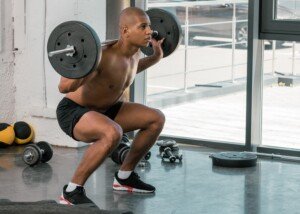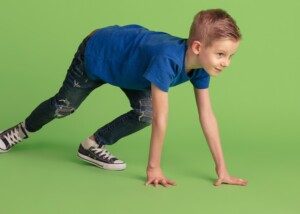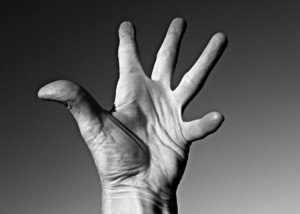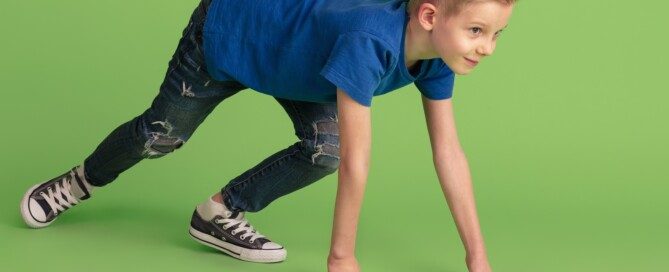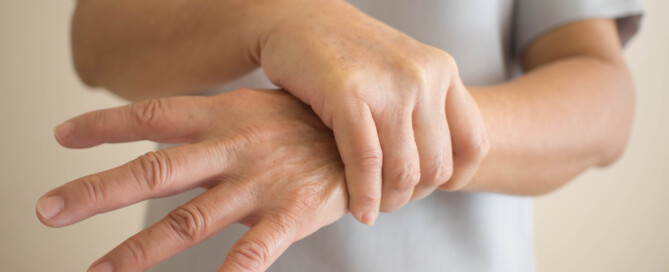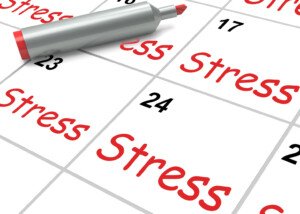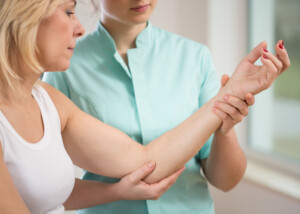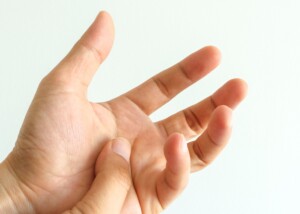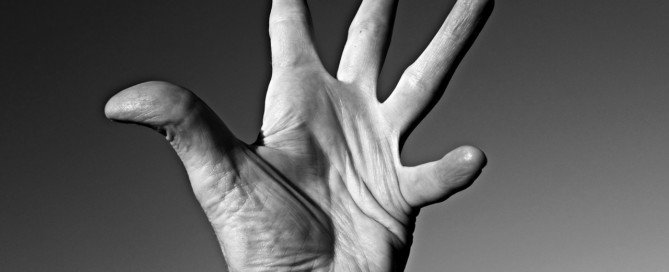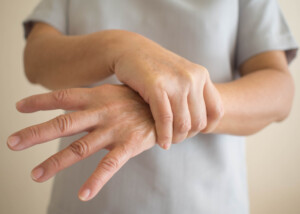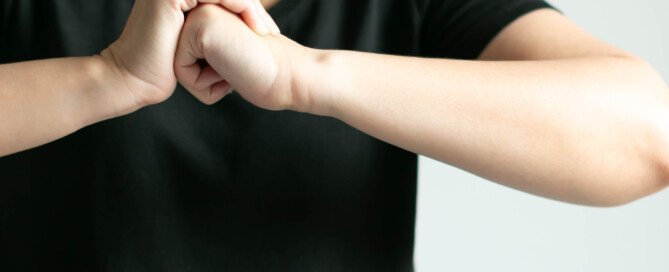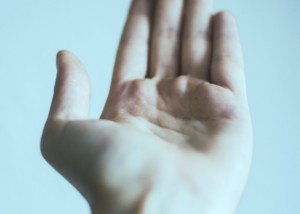Should Diabetics Eat Before or After Exercise?

Whether or not a diabetic should eat before or after exercise depends on at least five factors, says a leading expert on diabetes. (more…)
Should Diabetics Strength Train or Do Cardio for Weight Loss?

If a diabetic had to choose one form of exercise for weight loss, either strength training or cardio, one of these is much better for igniting fat loss.
Obesity and even a moderate amount of excess body fat are risk factors for developing type 2 diabetes. (more…)
3 Strength Training Exercises Least Affected by Mastectomy

If you’ve had a preventive double mastectomy and were told to lay off strength training for at least four weeks postop, there are 3 exercises that will be particularly easy to get back into once your restriction is lifted. (more…)
Why Don’t Kids Using Computers Get Carpal Tunnel Syndrome?

If typing, keyboard work and using a mouse are leading causes of carpal tunnel syndrome, you’d think there’d be scads of children and teens getting this condition. (more…)
What’s the Youngest You Can Get Carpal Tunnel Syndrome?
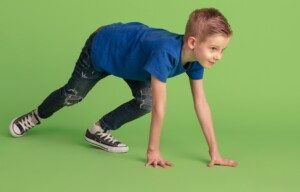
Now isn’t it funny that all these kids spending hours every day on their keyboard but few young people seem to get carpal tunnel syndrome? (more…)
Does Carpal Tunnel Syndrome Always Cause Pain?
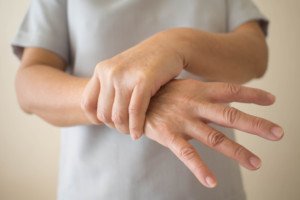
Carpal tunnel syndrome can be quite painful, prompting frustrated patients to seek a surgical solution.
But for some individuals with this common disorder, there is never any pain.
Tingling and/or numbness may be the only symptoms of carpal tunnel syndrome.
This condition occurs when the median nerve, which runs through the carpal tunnel in the wrist, becomes compressed.
The compression can lead to sensations of tingling or numbness, particularly in the thumb, index finger, middle finger and part of the ring finger.
The initial presentation of carpal tunnel syndrome often involves only tingling and numbness.
Those with only the tingling and numbness naturally worry that one day they will start experiencing pain.
The next question the becomes: When does the pain usually strike? In the morning? During activity?
With certain hand use such as chopping vegetables or using a computer?
“Actually, the most common symptom initially occurs at night, where there is numbness and tingling of the fingers,” says Alejandro Badia, MD, FACS, hand and upper limb surgeon and owner of Badia Hand to Shoulder Center in Doral, FL.
“People think it’s because of a problem with circulation or that they’re sleeping on their hand.
“Certainly this is partly positional, particularly flexing or bending the wrist or extending it.
“Those positions cause increased pressure on the median nerve which runs within the carpal tunnel that is defined by floor and walls of the carpal of wrist bones, and the roof is a thick two and a half inch center ligament called the transverse carpal.”
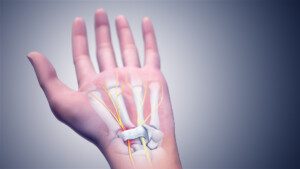
Compression of the median nerve in CTS. Scientific Animations
Furthermore, carpal tunnel syndrome can develop in both hands at about the same time — even though this presentation is very uncommon.
Causes include repetitive motions such as what are used on a keyboard, cash register or with sewing activities; underactive thyroid; obesity; rheumatoid arthritis and diabetes.
Dr. Badia explains, “The symptoms usually are a numbness and tingling, and then usually pain will begin at a later stage or sometimes never comes on, but regardless [the numbness and tingling] is very uncomfortable.”
- Numbness/tingling in the thumb
- Numbness/tingling in the index finger
- Numbness/tingling in the middle fingers
- Hand pain or aching, worse at night
- Pain radiating to the forearm or shoulder
- Reduced fine motor control
- Clumsiness of the hand
- Weak grip strength, dropping things
- Weakness in the thumb; may be atrophied
- Burning sensation in the hand
- Hand pain or worsening pain with wrist use
- Wrist shaking briefly relieves the pain
- Fingers feel swollen even when they aren’t
 Dr. Badia is a founding member of the American Hand Institute, a think tank and medical device start-up company focused on minimally invasive solutions to hand, wrist and elbow pathology. orthonowcare.com
Dr. Badia is a founding member of the American Hand Institute, a think tank and medical device start-up company focused on minimally invasive solutions to hand, wrist and elbow pathology. orthonowcare.com
 Lorra Garrick has been covering medical, fitness and cybersecurity topics for many years, having written thousands of articles for print magazines and websites, including as a ghostwriter. She’s also a former ACE-certified personal trainer.
Lorra Garrick has been covering medical, fitness and cybersecurity topics for many years, having written thousands of articles for print magazines and websites, including as a ghostwriter. She’s also a former ACE-certified personal trainer.
.
Top image: Shutterstock/ Orawan Pattarawimonchai
Can Carpal Tunnel Syndrome Make Fingers Crooked?
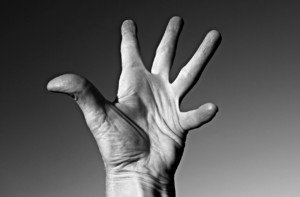
If you’ve been noticing lately that your fingers are becoming crooked, you’ll actually wish that this was only carpal tunnel syndrome.
Because what it most likely is – is far less treatable than carpal tunnel syndrome. (more…)
Can Carpal Tunnel Syndrome Cause Your Palm to Itch?

The itching of your palm is driving you mad and there seems to be no explanation for this itching – except maybe carpal tunnel syndrome?
Well, don’t go there.
“Itching, which is called pruritus, is usually a result of a histamine release by mast cells,” says Alejandro Badia, MD, FACS, a renowned hand and upper limb surgeon and owner of Badia Hand to Shoulder Center in Doral, FL., and founder of OrthoNOW, the only urgent orthopedic care franchise in the world.
A mast cell is a type of white blood cell.
Itching, says Dr. Badia, “can be from a symptom of a variety of issues.” Itching that doesn’t seem to have a cause that’s directly related to the skin (a dermatological cause) can actually be caused by a variety of conditions.
But one of them is not carpal tunnel syndrome, which is a disorder involving the median nerve.
In carpal tunnel syndrome, the median nerve is subjected to compression or pressure.
This results in the classic symptoms of numbness, tingling and/or pain in the wrist. The pain may also extend up the arm.
But a release of histamines does not result from CTS.
If you’re plagued by an itchy palm, and you have numbness, tingling and/or pain that fits the bill for carpal tunnel syndrome, this doesn’t mean that the itching in your palm is related to the median nerve compression.
Instead, you have two unrelated conditions occurring. Having your carpal tunnel syndrome treated will not relieve any itching of your palm.
- Numbness/tingling in the thumb
- Numbness/tingling in the index finger
- Numbness/tingling in the middle fingers
- Hand pain or aching, worse at night
- Pain radiating to the forearm or shoulder
- Reduced fine motor control
- Clumsiness of the hand
- Weak grip strength, dropping things
- Weakness in the thumb; may be atrophied
- Burning sensation in the hand
- Hand pain or worsening pain with wrist use
- Wrist shaking briefly relieves the pain
- Fingers feel swollen even when they aren’t
 Dr. Badia is a founding member of the American Hand Institute, a think tank and medical device start-up company focused on minimally invasive solutions to hand, wrist and elbow pathology. orthonowcare.com
Dr. Badia is a founding member of the American Hand Institute, a think tank and medical device start-up company focused on minimally invasive solutions to hand, wrist and elbow pathology. orthonowcare.com
 Lorra Garrick has been covering medical, fitness and cybersecurity topics for many years, having written thousands of articles for print magazines and websites, including as a ghostwriter. She’s also a former ACE-certified personal trainer.
Lorra Garrick has been covering medical, fitness and cybersecurity topics for many years, having written thousands of articles for print magazines and websites, including as a ghostwriter. She’s also a former ACE-certified personal trainer.
.
Top image: Shutterstock/WSW1985
Can Carpal Tunnel Syndrome Cause Cracking Wrists?

So your wrist is going snap, crackle pop!
Maybe there’s even some pain or tingling along with the cracking in your wrist: carpal tunnel syndrome as a cause for cracking of the wrist bones?
“CTS does not cause cracking wrists,” says Alejandro Badia, MD, FACS, a renowned hand and upper limb surgeon and owner of Badia Hand to Shoulder Center in Doral, FL., and founder of OrthoNOW, the only urgent orthopedic care franchise in the world.
So what usually causes wrists to crack?
Dr. Badia explains, “That is due to ligamentous laxity which people mistakenly call double jointed.” Ligamentous laxity means that the ligaments are loose.
“That is a huge misconception, but people who are lax tend to have multiple problems, whether it be with their shoulders — women particularly with their knees,” or in the spine or elsewhere.
“But no, cracking wrists has nothing to do with a nerve compression in the wrist.”
And that’s what carpal tunnel syndrome is: The median nerve is being compressed – and by soft tissue.
The bones have nothing to do with the condition, and carpal tunnel syndrome does not affect the bones.
Of course, it’s possible to have both carpal tunnel syndrome and cracking wrist bones at the same time, but this is just a coincidence. There is no cause and effect.
- Numbness/tingling in the thumb
- Numbness/tingling in the index finger
- Numbness/tingling in the middle fingers
- Hand pain or aching, worse at night
- Pain radiating to the forearm or shoulder
- Reduced fine motor control
- Clumsiness of the hand
- Weak grip strength, dropping things
- Weakness in the thumb; may be atrophied
- Burning sensation in the hand
- Hand pain or worsening pain with wrist use
- Wrist shaking briefly relieves the pain
- Fingers feel swollen even when they aren’t
 Dr. Badia is a founding member of the American Hand Institute, a think tank and medical device start-up company focused on minimally invasive solutions to hand, wrist and elbow pathology. orthonowcare.com
Dr. Badia is a founding member of the American Hand Institute, a think tank and medical device start-up company focused on minimally invasive solutions to hand, wrist and elbow pathology. orthonowcare.com
 Lorra Garrick has been covering medical, fitness and cybersecurity topics for many years, having written thousands of articles for print magazines and websites, including as a ghostwriter. She’s also a former ACE-certified personal trainer.
Lorra Garrick has been covering medical, fitness and cybersecurity topics for many years, having written thousands of articles for print magazines and websites, including as a ghostwriter. She’s also a former ACE-certified personal trainer.
.
Top image: Shutterstock/Jtas
Why Can’t Carpal Tunnel Syndrome Go Away on Its Own?




